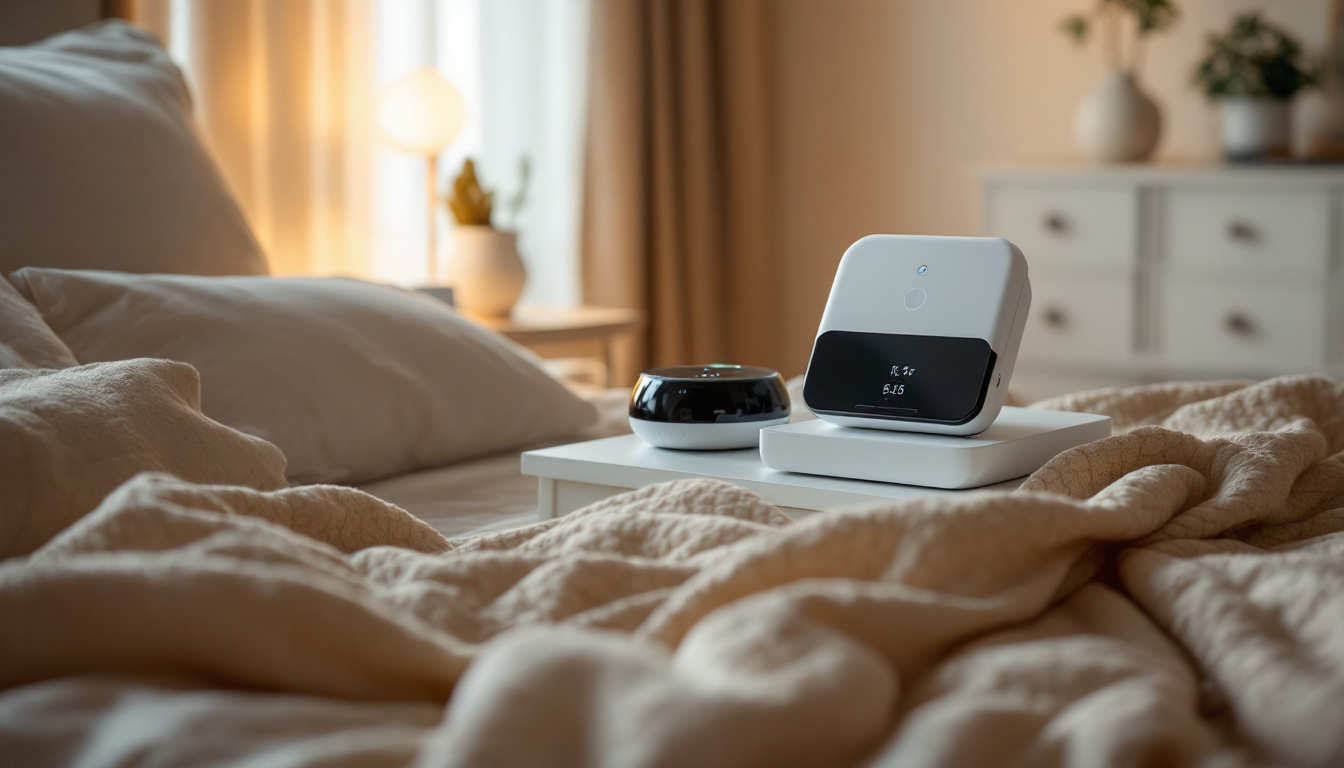What Are the Benefits of Using an Aerobika Device for Mucus Clearance?
The Aerobika device offers a drug-free solution for improving mucus clearance in people living with chronic lung diseases. This handheld respiratory tool uses oscillating positive expiratory pressure technology to help clear airways and reduce breathing difficulties.
Individuals with conditions like COPD and bronchiectasis often struggle with excess mucus buildup, which can lead to frequent infections, breathlessness, and reduced quality of life. Understanding how an Aerobika device helps improve mucus clearance becomes essential for managing these challenges effectively.
The primary Aerobika device benefits include:
- Enhanced breathing capacity through improved airway clearance
- Reduced frequency of COPD flare-ups and respiratory complications
- Better exercise tolerance as airways remain clearer
- Decreased episodes of breathlessness during daily activities
This portable device provides a practical approach to respiratory therapy that patients can use independently at home. The technique requires no medication, making it an attractive option for those seeking to minimize pharmaceutical interventions while maintaining effective mucus clearance routines.
How Does an Aerobika Device Work?
The Aerobika device uses a technology called oscillating positive expiratory pressure (OPEP) to help clear mucus from the lungs. Here’s how it works:
- Exhalation with Resistance: When you breathe out through the device, it creates resistance against your breath. This resistance generates positive pressure in your airways, keeping them open during the breathing process.
- Internal Valve Action: Inside the device, there is an internal valve that interrupts the airflow as you exhale. This interruption creates rapid changes in pressure.
- Vibration Generation: The pressure changes caused by the valve’s action produce vibrations that travel through your airways and into your lungs. The frequency of these vibrations typically ranges between 12 to 35 Hz, depending on how forcefully you exhale.
- Airway Support: The positive pressure generated by the device prevents airway collapse during exhalation, which is a common issue for individuals with chronic lung conditions. It acts like a splint, holding smaller airways open so trapped air and mucus can escape more easily.
- Mucus Mobilization: The oscillating mechanism of the device generates vibrations that shake the walls of your airways from the inside. This mechanical action has several benefits:
- It loosens sticky mucus attached to airway surfaces.
- It breaks up thick secretions into smaller, more manageable pieces.
- It moves mucus from smaller airways toward larger ones.
- It makes coughing more productive and less exhausting.
By combining sustained pressure and rhythmic vibrations, the Aerobika device addresses both airway stability and mucus mobilization simultaneously. This dual-action effect makes clearing mucus more efficient than relying solely on coughing.
What Role Does Mucus Clearance Play in Managing Chronic Lung Conditions?
Mucus clearance serves as a critical defense mechanism in healthy lungs, trapping inhaled particles, bacteria, and irritants before sweeping them out through tiny hair-like structures called cilia. This natural cleaning system keeps airways clear and prevents infections from taking hold.
When mucus clearance becomes impaired, the importance of mucus clearance becomes strikingly evident. In COPD, damaged airways produce excessive, thick mucus that overwhelms the body’s natural clearing mechanisms. The trapped mucus creates a breeding ground for bacteria, leading to frequent respiratory infections and progressive lung damage. Patients experience persistent coughing, increased breathlessness, and a higher risk of exacerbations that can require hospitalization.
Bronchiectasis presents an even more challenging scenario. The permanently widened airways characteristic of this condition create pockets where mucus accumulates and stagnates. This pooled mucus becomes infected repeatedly, causing a vicious cycle:
- Chronic infection damages airways further
- Damaged airways produce more abnormal mucus
- Increased mucus leads to more infections
- Each infection cycle worsens the structural damage
The inability to effectively clear mucus in these conditions directly correlates with reduced lung function, diminished quality of life, and accelerated disease progression. Effective mucus management becomes essential for preventing complications and maintaining respiratory health.
How Can Using an Aerobika Device Benefit Individuals with Lung Conditions?
The benefits of using the Aerobika device extend across multiple aspects of respiratory health for people managing chronic lung diseases. This drug-free approach delivers measurable improvements in daily breathing and long-term disease management.
Improved Lung Function
One of the main benefits is improved lung function. The device’s oscillating pressure mechanism, which is a type of Positive Expiratory Pressure (PEP) device, helps expand airways and keep them open during exhalation. This leads to better oxygen exchange and less effort required for breathing. Patients often find that they can take deeper breaths and feel less tightness in their chest after using the device regularly.
Specific Therapeutic Advantages
The device also provides specific therapeutic benefits:
- Reduced frequency of flare-ups in COPD patients, helping maintain stability
- Enhanced exercise tolerance, allowing individuals to stay more physically active
- Decreased episodes of breathlessness during daily activities
- More effective mucus mobilization compared to traditional coughing alone
- Prevention of mucus buildup that could lead to infections
Understanding How Aerobika Helps Improve Mucus Clearance
To understand how an Aerobika device helps improve mucus clearance, it’s important to know its role in breaking the cycle of mucus accumulation and respiratory decline. The vibrations produced during use reach deep into the lung tissue, loosening secretions that might otherwise stay trapped. This mechanical action works alongside natural clearance mechanisms, making the entire respiratory system more efficient at self-cleaning and reducing the bacterial load that contributes to infections and inflammation.
What Is the Recommended Way to Use an Aerobika Device for Optimal Results?
Using an Aerobika device correctly requires sitting upright with good posture during use to maximize chest clearance effectiveness. The device works best when you maintain a straight back and relaxed shoulders, allowing your lungs to fully expand during the breathing cycle.
Proper Breathing Technique:
- Take a deep breath in through your nose, filling your lungs completely
- Place the Aerobika mouthpiece firmly between your lips, creating a tight seal
- Exhale actively through the device at a moderate, steady pace
- Continue breathing out until your lungs feel empty
- Remove the device and perform 2-3 controlled coughs to expel loosened mucus
- Repeat this cycle 10-20 times per session
Your physiotherapist will adjust the resistance dial on your Aerobika device based on your specific lung capacity and condition severity. This personalized setting ensures the pressure pulses work effectively without causing excessive strain. Most individuals benefit from using the device 2-3 times daily, with each session lasting approximately 10-15 minutes.
The posture during use directly impacts how well vibrations travel through your airways. Leaning forward slightly while exhaling can help target different lung areas, though your healthcare provider may recommend specific positioning based on where mucus tends to accumulate in your respiratory system.

How Should You Care for Your Aerobika Device to Ensure Its Longevity?
Regular cleaning Aerobika device maintenance prevents bacterial growth and ensures the mechanism continues functioning properly. Daily hygiene practices protect your respiratory health while extending the device’s usable life, which typically lasts 12 months before replacement becomes necessary.
Daily Cleaning Method
Disassemble the device after each use and wash all components in lukewarm soapy water. Rinse thoroughly under running water to remove any soap residue, then shake off excess water and allow the parts to air dry on a clean towel. The device can also be placed on the top rack of a dishwasher for convenient cleaning.
Weekly Disinfection Options
Choose between two effective sterilization methods:
- Boiling method: Submerge the disassembled parts in boiling water for 5 minutes, then remove and air dry completely
- Cold sterilization: Use a commercially available cold sterilizing solution following the manufacturer’s instructions for soaking time
Store the device in a clean, dry location away from direct sunlight when not in use. Inspect the device regularly for cracks, discoloration, or damage to the internal components. Any visible wear or changes in the device’s resistance level signals the need for immediate replacement, even if the 12-month period hasn’t elapsed.
Are There Any Considerations or Precautions to Keep in Mind When Using an Aerobika Device?
What side effects might occur when using the Aerobika device? The device is generally well-tolerated with minimal documented side effects. Some users may experience mild dizziness during initial sessions, particularly when adjusting to the breathing technique and pressure settings.
When should you consult your healthcare provider? Contact your physiotherapist or doctor if you experience persistent discomfort, increased breathlessness, or chest pain during use. These symptoms may indicate that your resistance level needs adjustment or that the device isn’t suitable for your specific condition.
Are there specific safety precautions with Aerobika device use? Always follow your healthcare provider’s prescribed resistance settings and usage frequency. Using incorrect settings may reduce effectiveness or cause unnecessary strain. Individuals with certain medical conditions, such as recent chest surgery or pneumothorax, should seek medical clearance before starting therapy.
Understanding how an Aerobika device helps improve mucus clearance includes recognizing these safety considerations to ensure optimal and comfortable treatment outcomes.
Related : Oxygen Concentrator Philips EverFlo: A Buyer’s Guide for Long-Term Oxygen Therapy






















